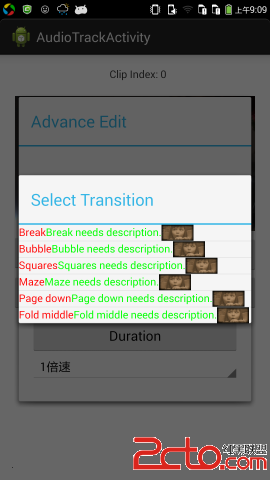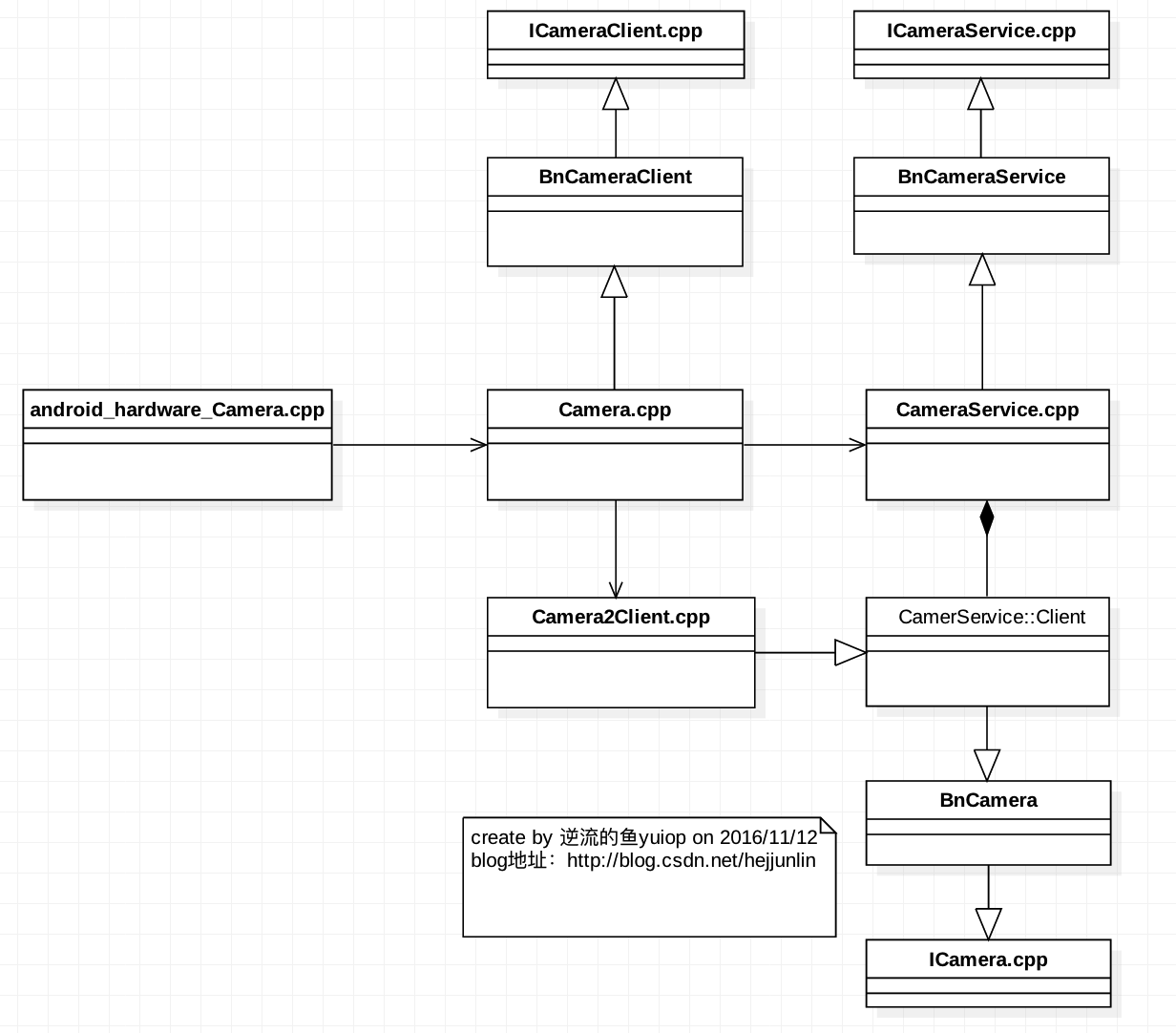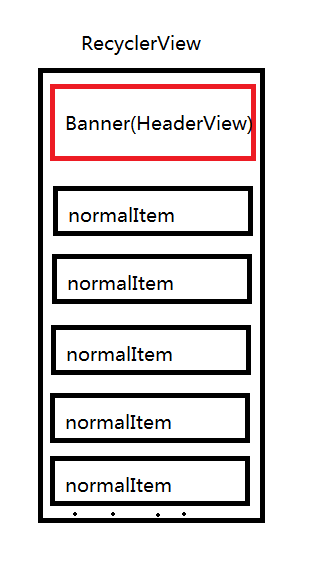1.為什麼要用Handler
出於性能優化的考慮,Android UI操作並不是線程安全,如果有多個線程並發操作UI組件,可能導致線程安全問題。可以設想下,如果在一個Activity中有多個線程去更新UI,並且都沒有加鎖機制,可能會導致什麼問題? 界面混亂,如果加鎖的話可以避免該問題但又會導致性能下降。因此,Android規定只允許UI線程修改Activity的UI組件。當程序第一次啟動時,Android會同時啟動一條主線程(Main Thread),主線程主要負責處理與UI相關的事件,比如用戶按鈕事件,並把相關的事件分發到對應的組件進行處理,因此主線程又稱為UI線程。那麼怎麼在新啟動的線程中更新UI組件呢,這就需要借助handler的消息傳遞機制來實現了。
2.Handler簡介
Handler類的主要作用主要有兩個:
1>在新啟動的線程中發送消息
2>在主線程中獲取和處理消息
Handler類包含如下方法用於發送、處理消息。(這裡只列出常用的方法,如果想獲取更多方法,建議查看api文檔:http://developer.android.com/reference/android/os/Handler.html)
♦ void handlerMessage(Message msg):處理消息的方法,該方法通常用於被重寫。
♦ final boolean hasMessage(int what):檢查消息隊列中是否包含what屬性為指定值的消息。
♦ sendEmptyMessage(int what):發送空消息
♦ final boolean sendMessage(Message msg):立即發送消息,注意這塊返回值,如果message成功的被放到message queue裡面則返回true,反之,返回false;(個人建議:對於這類問題不必主觀去記它,當實際使用時,直接查看源碼即可,源碼中有詳細的注釋)
3.Handler、Message、Looper、MessageQueue之間的關系、工作原理
為了更好的理解Handler,先來看看和Handler相關的一些組件:
Message:Handler發送、接收和處理的消息對象
Looper:每個線程只能擁有一個Looper.它的looper()方法負責循環讀取MessageQueue中的消息並將讀取到的消息交給發送該消息的handler進行處理。
MessageQueue:消息隊列,它采用先進先出的方式來管理Message。程序在創建Looper對象時,會在它的構造器中創建MessageQueue。源碼如下:
1 private Looper(boolean quitAllowed) {
2 mQueue = new MessageQueue(quitAllowed);
3 mThread = Thread.currentThread();
4 }
從源碼第2行中可以看出,在創建Looper對象時會創建一個與之關聯的MessageQueue對象。構造器是private修飾的,所以程序員是無法創建Looper對象的。
Handler:前面說Handler作用有兩個---發送消息和處理消息,Handler發送的消息必須被送到指定的MessageQueue,也就是說,要想Handler正常工作必須在當前線程中有一個MessageQueue,否則消息沒法保存。而MessageQueue是由Looper負責管理的,因此要想Handler正常工作,必須在當前線程中有一個Looper對象,這裡分為兩種情況:
1>主線程(UI線程),系統已經初始化了一個Looper對象,因此程序直接創建Handler即可
2>程序員自己創建的子線程,這時,程序員必須創建一個Looper對象,並啟動它。
創建Looper使用:Looper.prepare(),查看源碼:
1 public static void prepare() {
2 prepare(true);
3 }
4
5 private static void prepare(boolean quitAllowed) {
6 if (sThreadLocal.get() != null) {
7 throw new RuntimeException("Only one Looper may be created per thread");
8 }
9 sThreadLocal.set(new Looper(quitAllowed));
10 }
11
12 private Looper(boolean quitAllowed) {
13 mQueue = new MessageQueue(quitAllowed);
14 mThread = Thread.currentThread();
15 }
通過方法調用,第9行創建Looper對象,創建Looper對象時同時會創建MessageQueue對象(第13行)。此外,可以看出prepare()允許一個線程最多有一個Looper被創建。
然後調用Looper的looper()方法來啟動它,looper()使用一個死循環不斷取出MessageQueue中的消息,並將消息發送給對應的Handler進行處理。下面是Looper類中looper()方法的部分源碼:
1 for (;;) {
2 Message msg = queue.next(); // might block
3 if (msg == null) {
4 // No message indicates that the message queue is quitting.
5 return;
6 }
7
8 // This must be in a local variable, in case a UI event sets the logger
9 Printer logging = me.mLogging;
10 if (logging != null) {
11 logging.println(">>>>> Dispatching to " + msg.target + " " +
12 msg.callback + ": " + msg.what);
13 }
14
15 msg.target.dispatchMessage(msg);
16
17 if (logging != null) {
18 logging.println("<<<<< Finished to " + msg.target + " " + msg.callback);
19 }
20
21 // Make sure that during the course of dispatching the
22 // identity of the thread wasn't corrupted.
23 final long newIdent = Binder.clearCallingIdentity();
24 if (ident != newIdent) {
25 Log.wtf(TAG, "Thread identity changed from 0x"
26 + Long.toHexString(ident) + " to 0x"
27 + Long.toHexString(newIdent) + " while dispatching to "
28 + msg.target.getClass().getName() + " "
29 + msg.callback + " what=" + msg.what);
30 }
31
32 msg.recycleUnchecked();
33 }
很明顯第1行用了一個死循環,第2行從queue中取出Message,第15行通過dispatchMessage(Message msg)方法將消息發送給Handler。
4.HandlerThread介紹
Android API解釋:
Handy class for starting a new thread that has a looper. The looper can then be used to create handler classes. Note that start() must still be called.
意思是說:這個類啟動一個新的線程並且創建一個Looper,這個Looper可以用來創建一個Handler類,完了之後一定要啟動這個線程。
什麼時候使用HandlerThread?
1.主線程需要通知子線程執行耗時操作(一般都是子線程執行耗時操作,完了之後,發送消息給主線程更新UI)。
2.開發中可能會多次創建匿名線程,這樣可能會消耗更多的系統資源。而HandlerThread自帶Looper使他可以通過消息來多次重復使用當前線程,節省開支;
下面是HandlerThread應用部分代碼:
1 private static final String TAG = "MainActivity";
2 private static final int FLAG_TEST = 1;
3
4 @Override
5 protected void onCreate(Bundle savedInstanceState) {
6 super.onCreate(savedInstanceState);
7 setContentView(R.layout.activity_main);
8 Log.i(TAG,"main thread:"+Thread.currentThread());
9 HandlerThread thread = new HandlerThread("handler thread");
10 thread.start();//一定要啟動該線程
11 Handler handler = new Handler(thread.getLooper()){
12 @Override
13 public void handleMessage(Message msg) {
14 Log.i(TAG,"handler thread:"+Thread.currentThread());
15 switch (msg.what){
16 case FLAG_TEST:
17 //耗時操作...
18 break;
19 default:
20 break;
21 }
22 super.handleMessage(msg);
23 }
24 };
25 handler.sendEmptyMessage(FLAG_TEST);
26 }
log:
com.example.administrator.handlertest I/MainActivity﹕ main thread:Thread[main,5,main]
com.example.administrator.handlertest I/MainActivity﹕ handler thread:Thread[handler thread,5,main]
通過log可以看出handler處在一個子線程中,這樣就能夠執行一些耗時操作。
第十一行通過thread.getLooper()來創建handler,那麼我們來看下getLooper()裡面的源碼:
1 public Looper getLooper() {
2 if (!isAlive()) {
3 return null;
4 }
5
6 // If the thread has been started, wait until the looper has been created.
7 synchronized (this) {
8 while (isAlive() && mLooper == null) {
9 try {
10 wait();
11 } catch (InterruptedException e) {
12 }
13 }
14 }
15 return mLooper;
16 }
看第8行代碼,如果這個線程可用並且looper為null時,就會調用wait()方法,處於等待狀態,這樣可以有效的避免多線程並發操作引起的空指針異常。在thread啟動時,會調用run()方法,再來看看run()方法裡面的代碼:
1 @Override
2 public void run() {
3 mTid = Process.myTid();
4 Looper.prepare();
5 synchronized (this) {
6 mLooper = Looper.myLooper();
7 notifyAll();
8 }
9 Process.setThreadPriority(mPriority);
10 onLooperPrepared();
11 Looper.loop();
12 mTid = -1;
13 }
第4行創建了Looper對象,第6、7行獲取當前線程Looper之後調用notifyAll()方法。這時調用getLooper()方法返回一個Looper對象。
上面有提到使用HandlerThread避免多線程並發操作引起的空指針異常,這裡解釋下為什麼:如果onCreate方法第11行通過程序員自定義的一個新線程創建handler時,很可能出現這樣一個結果:創建handler的代碼已經執行了,而新線程卻還沒有Looper.prepare()(創建Looper對象,那麼這樣就會導致空指針異常)。
對代碼稍做修改:
1 package com.example.administrator.handlertest;
2
3 import android.os.Bundle;
4 import android.os.Handler;
5 import android.os.Looper;
6 import android.os.Message;
7 import android.support.v7.app.ActionBarActivity;
8 import android.util.Log;
9
10 public class MainActivity extends ActionBarActivity {
11
12 private static final String TAG = "MainActivity";
13 private static final int FLAG_TEST = 1;
14
15 @Override
16 protected void onCreate(Bundle savedInstanceState) {
17 super.onCreate(savedInstanceState);
18 setContentView(R.layout.activity_main);
19 Log.i(TAG,"main thread:"+Thread.currentThread());
20 // HandlerThread thread = new HandlerThread("handler thread");
21 // thread.start();//一定要啟動該線程
22 MyThread thread = new MyThread();
23 thread.start();
24 Handler handler = new Handler(thread.looper){
25 @Override
26 public void handleMessage(Message msg) {
27 Log.i(TAG,"handler thread:"+Thread.currentThread());
28 switch (msg.what){
29 case FLAG_TEST:
30 //耗時操作...
31 break;
32 default:
33 break;
34 }
35 super.handleMessage(msg);
36 }
37 };
38 handler.sendEmptyMessage(FLAG_TEST);
39 }
40
41 static class MyThread extends Thread{
42 Looper looper;
43 @Override
44 public void run() {
45 Looper.prepare();looper = Looper.myLooper();
46 //...
47 Looper.loop();
48 }
49 }
50 }
運行結果:
1 Caused by: java.lang.NullPointerException
2 at android.os.Handler.<init>(Handler.java:234)
3 at android.os.Handler.<init>(Handler.java:142)
4 at com.example.administrator.handlertest.MainActivity$1.<init>(MainActivity.java:24)
5 at com.example.administrator.handlertest.MainActivity.onCreate(MainActivity.java:24)
6 at android.app.Activity.performCreate(Activity.java:5211)
7 at android.app.Instrumentation.callActivityOnCreate(Instrumentation.java:1151)
8 at android.app.ActivityThread.performLaunchActivity(ActivityThread.java:2341)
從異常信息第4行中可以看出:onCreate()方法第24行thread.looper是一個null.這時因為還沒等新線程創建Looper,Handler就已經創建了。如果在第23行thread.start()後面休眠幾秒就不會報空指針異常了。
最後補充一點,Android判斷當前更新UI的線程是否是主線程的對象ViewRootImpl對象在onResume()中,所以只要子線程在onResume()之前完成更新UI也是能夠實現的。這裡只是簡單提一下,知道就行,不過不要這麼做。
 Android探秘:SimpleAdapter與Bitmap的結合
Android探秘:SimpleAdapter與Bitmap的結合
 Android 極速開發框架 dhroid
Android 極速開發框架 dhroid
 Android Multimedia框架總結(十九)Camera2框架C/S模型之CameraService啟動及與Client連接過程
Android Multimedia框架總結(十九)Camera2框架C/S模型之CameraService啟動及與Client連接過程
 【Android】掌握自定義LayoutManager(一) 系列開篇 常見誤區、問題、注意事項,常用API。
【Android】掌握自定義LayoutManager(一) 系列開篇 常見誤區、問題、注意事項,常用API。